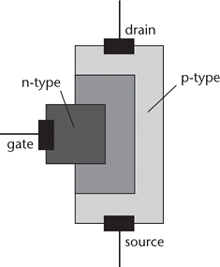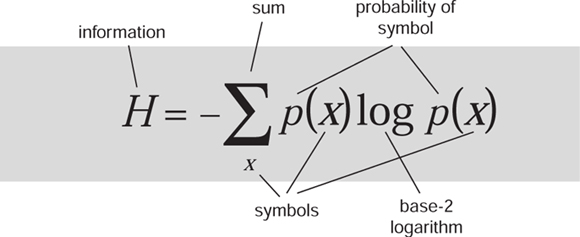Read In Pursuit of the Unknown Online
Authors: Ian Stewart
In Pursuit of the Unknown (50 page)
With that as a caveat, a surprising number of quantum physicists accept the many-worlds interpretation. Schrödinger's cat really is alive and dead. Hitler really did win and lose. One version of us lives in one of those universes, others do not. That's what the mathematics says. It's not an interpretation, a convenient way to arrange the calculations. It's as real as you and I. It
is
you and I.
I'm not convinced. It's not the superposition that bothers me, though. I don't find the existence of a parallel Nazi world unthinkable, or impossible.
3
But I do object, strenuously, to the idea that you can separate a quantum wave function according to human-scale historical narratives. The mathematical separation occurs at the level of quantum states of constituent particles. Most combinations of particle states make no sense whatsoever as a human narrative. A simple alternative to a dead cat is not a live cat. It is a dead cat with one electron in a different state. Complex alternatives are far more numerous than a live cat. They include a cat that suddenly explodes for no apparent reason, one that turns into a flower vase, one that gets elected president of the United States, and one that survived even though the radioactive atom released the poison. Those alternative cats are rhetorically useful but unrepresentative. Most alternatives are not cats at all; in fact,
they are indescribable in classical terms
. If so, most of the alternative Stewarts aren't recognisable as peopleâindeed as anything â and almost all of those that exist do so within a world that makes absolutely no sense in human terms. So the chance that another version of little old me happens to live in another world that makes narrative sense to a human being is negligible.
The universe may well be an incredibly complex superposition of alternative states. If you think quantum mechanics is basically right, it has to be. In 1983 the physicist Stephen Hawking said that the many-worlds interpretation was âself-evidently correct' in this sense. But it doesn't follow that there exists a superposition of universes in which a cat is alive or dead, and Hitler did or did not win. There is no reason to suppose that the mathematical components can be separated into sets that fit together to create human narratives. Hawking dismissed narrative interpretations of the many-worlds formalism, saying âAll that one does, really, is to calculate conditional probabilities â in other words, the probability of A happening, given B. I think that that's all the many-worlds interpretation is. Some people overlay it with a lot of mysticism about the wave function splitting
into different parts. But all that you're calculating is conditional probabilities.'
It's worth comparing the Hitler tale with Feynman's story of the light ray. In the style of alternative Hitlers, Feynman would be telling us that there is one classical world where the light ray bounces off the mirror at the same angle at which it hit, another classical world in which it bounces at an angle that's one degree wrong, another where it's two degrees wrong, and so on. But he didn't. He told us that there is
one
classical world, emerging from the superposition of the quantum alternatives. There may be innumerable parallel worlds at the quantum level, but these do not correspond in any meaningful way to parallel worlds that are describable at the classical level. Snell's law is valid in
any
classical world. If it weren't, the world couldn't be classical. As Feynman explained for light rays,
the
classical world emerges when you superpose all of the quantum alternatives. There is only one such superposition, so there is only one classical universe. Ours.
Quantum mechanics isn't confined to the laboratory. The whole of modern electronics depends on it. Semiconductor technology, the basis of all integrated circuits â silicon chips â is quantum-mechanical. Without the physics of the quantum, no one would have dreamed that such devices could work. Computers, mobile phones, CD players, games consoles, cars, refrigerators, ovens, virtually all modern household gadgets, contain memory chips, to contain the instructions that make these devices do what we want. Many contain more complex circuitry, such as microprocessors, an entire computer on a chip. Most memory chips are variations on the first true semiconductor device: the transistor.
In the 1930s, American physicists Eugene Wigner and Frederick Seitz analysed how electrons move though a crystal, a problem that requires quantum mechanics. They discovered some of the basic features of semiconductors. Some materials are conductors of electricity: electrons can flow through them with ease. Metals are good conductors, and in everyday use copper wire is commonplace for this purpose. Insulators do not permit electrons to flow, so they stop the flow of electricity: the plastics that sheathe electrical wires, to prevent us electrocuting ourselves on the TV power lead, are insulators. Semiconductors are a bit of both, depending on circumstances. Silicon is the best known, and currently the most widely used, but several other elements such as antimony, arsenic, boron, carbon, germanium, and selenium are also semiconductors. Because
semiconductors can be switched from one state to the other, they can be used to manipulate electrical currents, and this is the basis of all electronic circuits.
Wigner and Seitz discovered that the properties of semiconductors depend on the energy levels of the electrons within them, and these levels can be controlled by âdoping' the basic semiconductor material by adding small quantities of specific impurities. Two important types are p-type semiconductors, which carry current as a flow of electrons, and n-type semiconductors, in which current flows in the opposite direction to the electrons, carried by âholes' â places where there are fewer electrons than normal. In 1947 John Bardeen and Walter Brattain at Bell Laboratories discovered that a crystal of germanium could act as an amplifier. If an electrical current was fed into it, the output current was higher. William Shockley, leader of the Solid State Physics Group, realised how important this could be, and initiated a project to investigate semiconductors. Out of this came the transistor â short for âtransfer resistor'. There were some earlier patents but no working devices or published papers. Technically the Bell Labs' device was a JFET (junction gate field-effect transistor,
Figure 55
). Since this initial breakthrough, many other kinds of transistor have been invented. Texas Instruments manufactured the first silicon transistor in 1954. The same year saw a transistor-based computer, TRIDAC, built by the US military. It was three cubic feet in size and its power requirement was the same as one light bulb. This was an early step in a huge American military programme to develop alternatives to vacuum tube electronics, which was too cumbersome, fragile, and unreliable for military use.

Fig 55
Structure of a JFET. The source and drain are at the ends, in a p-type layer, while the gate is an n-type layer that controls the flow. If you think of the flow of electrons from source to drain as a hose, the gate in effect squeezes the hose, increasing the pressure (voltage) at the drain.
Because semiconductor technology is based on doping silicon or similar substances with impurities, it lent itself to miniaturisation. Circuits can be built up in layers on a silicon substrate, by bombarding the surface with the desired impurity, and etching away unwanted regions with acid. The areas affected are determined by photographically produced masks, and these can be shrunk to very small size using optical lenses. Out of all this emerged today's electronics, including memory chips that can hold billions of bytes of information and very fast microprocessors that orchestrate the activity of computers.
Another ubiquitous application of quantum mechanics is the laser. This is a device that emits a strong beam of coherent light: one in which the light waves are all in phase with each other. It consists of an optical cavity with mirrors at each end, filled with something that reacts to light of a specific wavelength by producing more light of the same wavelength â a light amplifier. Pump in energy to start the process rolling, let the light bounce to and fro along the cavity, amplifying all the time, and when it reaches a sufficiently high intensity, let it out. The gain medium can be a fluid, a gas, a crystal, or a semiconductor. Different materials work at different wavelengths. The amplification process depends on the quantum mechanics of atoms. The electrons in the atoms can exist in different energy states, and they can be switched between them by absorbing or emitting photons.
LASER means light amplification by stimulated emission of radiation. When the first laser was invented, it was widely derided as an answer looking for a problem. This was unimaginative: a whole host of suitable problems quickly appeared, once there was a solution. Producing a coherent beam of light is basic technology, and it was always bound to have uses, just as an improved hammer would automatically find many uses. When inventing generic technology, you don't have to have a specific application in mind. Today we use lasers for so many purposes that it's impossible to list them all. There are prosaic uses like laser pointers for lectures and laser beams for DIY. CD players, DVD players, and Blu-ray all use lasers to read information from tiny pits or marks on discs. Surveyors use lasers to measure distances and angles. Astronomers use lasers to measure the distance from the Earth to the Moon. Surgeons use lasers for fine cutting of delicate tissues. Laser treatment of eyes is routine, for repairing detached retinas and remoulding the surface of the cornea to correct vision instead of using glasses or contact lenses. The âStar Wars'
antimissile system was intended to use powerful lasers to shoot down enemy missiles, and although it was never built, some of the lasers were. Military uses of lasers, akin to the pulp science-fiction ray-gun, are being investigated right now. And it may even be possible to launch space vehicles from Earth by making them ride a powerful laser beam.
New uses of quantum mechanics arrive almost by the week. One of the latest is quantum dots, tiny pieces of semiconductor whose electronic properties, including the light that they emit, vary according to their size and shape. They can therefore be tailored to have many desirable features. They already have a variety of applications, including biological imaging, where they can replace traditional (and often toxic) dyes. They also perform much better, emitting brighter light.
Further down the line, some engineers and physicists are working on the basic components of a quantum computer. In such a device, the binary states of 0 and 1 can be superposed in any combination, in effect allowing computations to assume both values at the same time. This would allow many different calculations to be performed in parallel, speeding them up enormously. Theoretical algorithms have been devised, carrying out such tasks as splitting a number into its prime factors. Conventional computers run into trouble when the numbers have more than a hundred digits or so, but a quantum computer should be able to factorise much bigger numbers with ease. The main obstacle to quantum computing is decoherence, which destroys superposed states. Schrödinger's cat is exacting revenge for its inhumane treatment.
| 15 | Codes, communications, and computers |
Â
Â

Â
Â
It defines how much information a message contains, in terms of the probabilities with which the symbols that make it up are likely to occur.